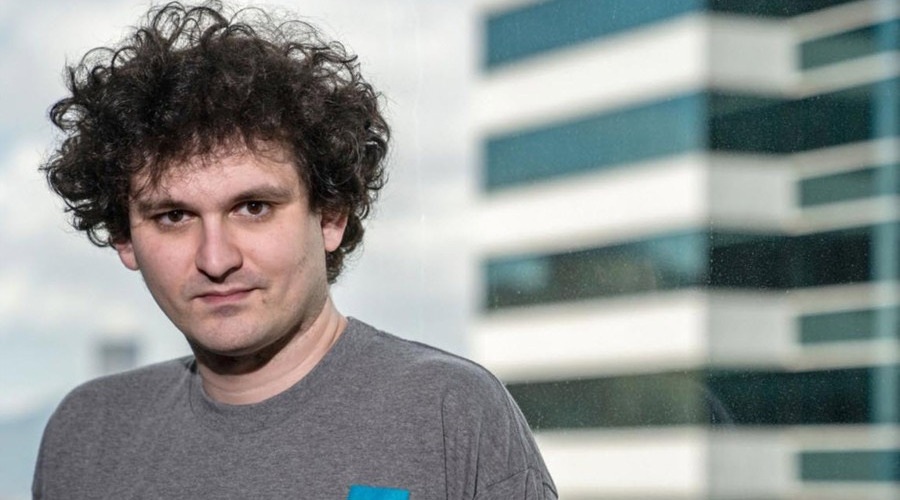
In New York City, a monumental legal tussle is unfolding.
Sam Bankman-Fried, once hailed as a cryptocurrency titan with a net worth of
$26 billion, now faces an $8 billion criminal trial that could potentially land
him in prison for over a century.
A year ago, Bankman-Fried was living lavishly in a $40
million penthouse in the Bahamas while overseeing a crypto empire valued at $32
billion, CNBC reported. Today, he stands accused of orchestrating one of the
most significant financial frauds in US history. The trial begins today with
the selection of the jury and is set to reveal the complex allegations against
him.
This trial marks the beginning of the first of two separate
criminal proceedings against Bankman-Fried. In the initial trial, he faces seven criminal
counts, including wire fraud, securities fraud, and money laundering .
A superseding indictment alleges that Bankman-Fried misused
billions of dollars worth of customers’ funds for personal purchases, including
luxury real estate in the Bahamas, and covering losses incurred by his crypto
hedge fund, Alameda Research. The US Department of Justice (DOJ) claims that
customers’ cash was funneled into Alameda through direct deposits and a secret
backdoor embedded in FTX’s code.
Prosecutors contend that more than $8 billion of customer
money is unaccounted for, and they also accuse Bankman-Fried of deceiving FTX’s
investors by concealing the scheme. Additionally, SBF allegedly used customers’ funds for campaign contributions in the 2022 midterm elections.
How It All Started
Bankman-Fried’s journey from obscurity to crypto fame began
in 2017 when he noticed a significant price difference in Bitcoin across
various exchanges. He seized the arbitrage opportunity, buying Bitcoin on one
exchange and selling it on another to profit from the price spread. This
strategy, known as the Kimchi Premium, particularly thrived in South Korea.
After experimenting personally in the crypto market,
Bankman-Fried launched Alameda Research, a trading house named after his
hometown in California. Alameda’s success laid the foundation for the creation
of FTX, an international cryptocurrency exchange offering innovative trading
features that later gained a valuation of $2 billion.
Bankman-Fried’s personal wealth soared to around $26 billion
at its peak, and he became a prominent figure in both the crypto industry and
politics, pledging significant donations to the Democratic Party for the 2022
midterm elections.
Tuesday’s Jury Selection Process
Bankman-Fried’s case has drawn the attention of over 50
prospective jurors and 40 reporters at the US District Court for the Southern
District of New York, Coindesk reported. As the morning unfolded, it became
evident that this trial would not be without its challenges, including a
careful vetting process for potential jurors.
The trial, which began on Tuesday, revolved around the
selection of an impartial jury, an important step in the legal proceeding.
These individuals will decide Bankman-Fried’s fate over the course of what is
expected to be a six-week trial.
The court’s focus initially centered on removing potential
jurors who might face hardships during the extended trial period. This involved
assessing their ability to commit to such a lengthy case and ensuring they had
no medical or conflicting issues that could hinder their participation.
“Not a Death Penalty Case”
As the jury selection process continued, some intriguing
moments unfolded. One potential juror expressed concerns about her ability to
deliver a guilty verdict if a death sentence were on the table, prompting the
judge to clarify that this was not a death penalty case. Another juror cited a
forthcoming wedding as a potential conflict, leading to a query about the
closeness of her relationship with the person getting married. Meanwhile, a prospective
juror mentioned plans to spend six months in Maui, earning a light-hearted
response from the judge.
Throughout these proceedings, Sam Bankman-Fried remained a
central figure, notably different from his previous court appearance. Gone were
his trademark disheveled curls, replaced by a more conventional haircut. He
also entered the courtroom without shackles, and he spent much of the morning
consulting with his legal team via a laptop.
While several potential jurors were dismissed, the judge
expressed optimism that a full jury of 12 individuals and six alternates could
be seated by the end of the day or, at the latest, by Wednesday morning.
Notably, one of the federal prosecutors, Nicholas Roos,
confirmed that Bankman-Fried had not been offered a plea deal. As the trial
progresses, the decision of whether Bankman-Fried will take the stand in his
defense remains uncertain. The trial is anticipated to last approximately six
weeks, providing ample time for both sides to present their arguments and
evidence.
In the coming weeks, all eyes will remain fixed on the Sam
Bankman-Fried trial as it unfolds against the backdrop of the cryptocurrency
industry’s continued evolution and regulatory scrutiny.
In New York City, a monumental legal tussle is unfolding.
Sam Bankman-Fried, once hailed as a cryptocurrency titan with a net worth of
$26 billion, now faces an $8 billion criminal trial that could potentially land
him in prison for over a century.
A year ago, Bankman-Fried was living lavishly in a $40
million penthouse in the Bahamas while overseeing a crypto empire valued at $32
billion, CNBC reported. Today, he stands accused of orchestrating one of the
most significant financial frauds in US history. The trial begins today with
the selection of the jury and is set to reveal the complex allegations against
him.
This trial marks the beginning of the first of two separate
criminal proceedings against Bankman-Fried. In the initial trial, he faces seven criminal
counts, including wire fraud, securities fraud, and money laundering .
A superseding indictment alleges that Bankman-Fried misused
billions of dollars worth of customers’ funds for personal purchases, including
luxury real estate in the Bahamas, and covering losses incurred by his crypto
hedge fund, Alameda Research. The US Department of Justice (DOJ) claims that
customers’ cash was funneled into Alameda through direct deposits and a secret
backdoor embedded in FTX’s code.
Prosecutors contend that more than $8 billion of customer
money is unaccounted for, and they also accuse Bankman-Fried of deceiving FTX’s
investors by concealing the scheme. Additionally, SBF allegedly used customers’ funds for campaign contributions in the 2022 midterm elections.
How It All Started
Bankman-Fried’s journey from obscurity to crypto fame began
in 2017 when he noticed a significant price difference in Bitcoin across
various exchanges. He seized the arbitrage opportunity, buying Bitcoin on one
exchange and selling it on another to profit from the price spread. This
strategy, known as the Kimchi Premium, particularly thrived in South Korea.
After experimenting personally in the crypto market,
Bankman-Fried launched Alameda Research, a trading house named after his
hometown in California. Alameda’s success laid the foundation for the creation
of FTX, an international cryptocurrency exchange offering innovative trading
features that later gained a valuation of $2 billion.
Bankman-Fried’s personal wealth soared to around $26 billion
at its peak, and he became a prominent figure in both the crypto industry and
politics, pledging significant donations to the Democratic Party for the 2022
midterm elections.
Tuesday’s Jury Selection Process
Bankman-Fried’s case has drawn the attention of over 50
prospective jurors and 40 reporters at the US District Court for the Southern
District of New York, Coindesk reported. As the morning unfolded, it became
evident that this trial would not be without its challenges, including a
careful vetting process for potential jurors.
The trial, which began on Tuesday, revolved around the
selection of an impartial jury, an important step in the legal proceeding.
These individuals will decide Bankman-Fried’s fate over the course of what is
expected to be a six-week trial.
The court’s focus initially centered on removing potential
jurors who might face hardships during the extended trial period. This involved
assessing their ability to commit to such a lengthy case and ensuring they had
no medical or conflicting issues that could hinder their participation.
“Not a Death Penalty Case”
As the jury selection process continued, some intriguing
moments unfolded. One potential juror expressed concerns about her ability to
deliver a guilty verdict if a death sentence were on the table, prompting the
judge to clarify that this was not a death penalty case. Another juror cited a
forthcoming wedding as a potential conflict, leading to a query about the
closeness of her relationship with the person getting married. Meanwhile, a prospective
juror mentioned plans to spend six months in Maui, earning a light-hearted
response from the judge.
Throughout these proceedings, Sam Bankman-Fried remained a
central figure, notably different from his previous court appearance. Gone were
his trademark disheveled curls, replaced by a more conventional haircut. He
also entered the courtroom without shackles, and he spent much of the morning
consulting with his legal team via a laptop.
While several potential jurors were dismissed, the judge
expressed optimism that a full jury of 12 individuals and six alternates could
be seated by the end of the day or, at the latest, by Wednesday morning.
Notably, one of the federal prosecutors, Nicholas Roos,
confirmed that Bankman-Fried had not been offered a plea deal. As the trial
progresses, the decision of whether Bankman-Fried will take the stand in his
defense remains uncertain. The trial is anticipated to last approximately six
weeks, providing ample time for both sides to present their arguments and
evidence.
In the coming weeks, all eyes will remain fixed on the Sam
Bankman-Fried trial as it unfolds against the backdrop of the cryptocurrency
industry’s continued evolution and regulatory scrutiny.
- SEO Powered Content & PR Distribution. Get Amplified Today.
- PlatoData.Network Vertical Generative Ai. Empower Yourself. Access Here.
- PlatoAiStream. Web3 Intelligence. Knowledge Amplified. Access Here.
- PlatoESG. Carbon, CleanTech, Energy, Environment, Solar, Waste Management. Access Here.
- PlatoHealth. Biotech and Clinical Trials Intelligence. Access Here.
- Source: https://www.financemagnates.com//cryptocurrency/sam-bankman-frieds-legal-battle-begins-inside-the-8-billion-trial/
- :has
- :is
- :not
- 12
- 2017
- 2022
- 40
- 50
- a
- ability
- About
- accused
- across
- Additionally
- After
- against
- ago
- Alameda
- ALAMEDA RESEARCH
- All
- Allegations
- alleges
- also
- an
- and
- Another
- Anticipated
- approximately
- arbitrage
- arguments
- around
- AS
- Assessing
- At
- attention
- backdoor
- backdrop
- Bahamas
- Bankman-Fried
- banner
- Battle
- BE
- became
- been
- began
- Beginning
- Billion
- billions
- Bitcoin
- both
- Both Sides
- Buying
- Buying Bitcoin
- by
- california
- Campaign
- careful
- case
- Cash
- centered
- central
- Century
- challenges
- cited
- City
- claims
- code
- coming
- coming weeks
- commit
- complex
- Concerns
- CONFIRMED
- conflict
- Conflicting
- consulting
- continued
- contributions
- conventional
- could
- course
- Court
- covering
- creation
- Criminal
- crypto
- Crypto Industry
- Crypto Market
- cryptocurrency
- Cryptocurrency Exchange
- customer
- Customers
- day
- deal
- Death
- decide
- decision
- Defense
- deliver
- democratic
- democratic party
- Department
- department of justice
- Department of Justice (DoJ)
- deposits
- difference
- different
- direct
- district
- district court
- DoJ
- dollars
- donations
- drawn
- during
- Earning
- Elections
- embedded
- Empire
- end
- ensuring
- entered
- estate
- evidence
- evident
- evolution
- exchange
- Exchanges
- expected
- expressed
- Eyes
- Face
- faces
- FAME
- fate
- Features
- Federal
- Figure
- financial
- First
- fixed
- Focus
- For
- forthcoming
- Foundation
- fraud
- from
- FTX
- full
- fund
- funds
- gained
- getting
- gone
- guilty
- had
- hardships
- he
- hedge
- hedge fund
- her
- him
- hinder
- his
- history
- House
- HTTPS
- if
- important
- in
- Including
- incurred
- indictment
- individuals
- industry
- initial
- initially
- innovative
- inside
- International
- into
- intriguing
- Investors
- involved
- issues
- IT
- ITS
- journey
- jpg
- judge
- Justice
- kimchi
- kimchi premium
- known
- korea
- Land
- laptop
- Last
- later
- latest
- launched
- leading
- Legal
- legal team
- living
- losses
- Luxury
- Market
- Meanwhile
- medical
- mentioned
- Midterm
- Midterm Elections
- might
- million
- Moments
- money
- months
- monumental
- more
- morning
- most
- much
- Named
- net
- New
- New York
- new york city
- nicholas
- no
- notably
- now
- of
- offered
- offering
- on
- once
- ONE
- Opportunity
- Optimism
- or
- over
- overseeing
- participation
- particularly
- party
- Peak
- penthouse
- period
- person
- personal
- Personally
- plans
- plato
- Plato Data Intelligence
- PlatoData
- plea deal
- politics
- potential
- potentially
- Premium
- present
- previous
- price
- prison
- Proceedings
- process
- Profit
- prominent
- prosecutors
- prospective
- providing
- purchases
- real
- real estate
- regulatory
- relationship
- remain
- remained
- remains
- removing
- replaced
- Reported
- research
- response
- reveal
- revolved
- s
- Sam
- Sam Bankman-Fried
- sbf
- scheme
- scrutiny
- Secret
- Securities
- securities fraud
- seized
- selection
- Selling
- sentence
- separate
- set
- seven
- several
- Sides
- significant
- SIX
- Six months
- soared
- some
- South
- South Korea
- Southern
- spend
- spent
- spread
- stand
- stands
- Step
- Strategy
- success
- such
- table
- Take
- team
- than
- that
- The
- The Bahamas
- their
- These
- they
- this
- Through
- time
- titan
- to
- today
- trademark
- Trading
- trial
- Tuesday
- two
- Uncertain
- unfolding
- us
- US Department of Justice
- used
- Valuation
- valued
- various
- Verdict
- via
- was
- Wealth
- wedding
- Wednesday
- Weeks
- were
- What
- What is
- when
- whether
- which
- while
- WHO
- will
- Wire
- Wire Fraud
- with
- without
- worth
- would
- year
- york
- zephyrnet









